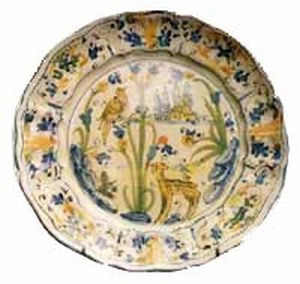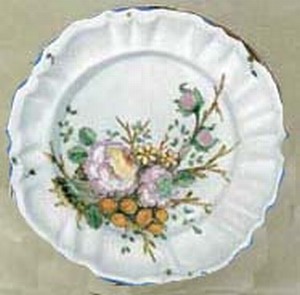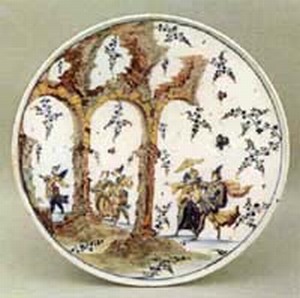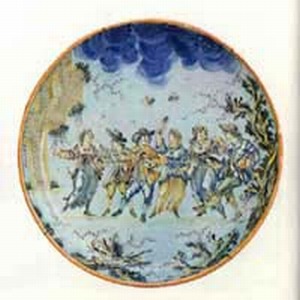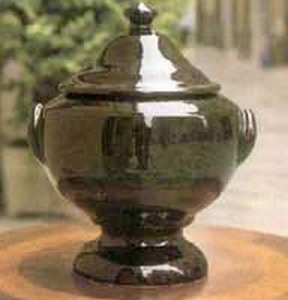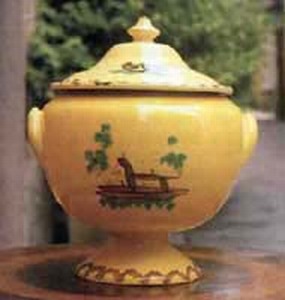|
ANCIENT
SAVONA OR WHITE AND BLUE The decorum was introduced around half the XVII century, from the family of the Guidobonos to whose founder Giovanni is made to go up again the definition to clear dark color of the typical monochrome turchino. The graphics is fundamentally constituted by the representation of the situated human figure in a landscape almost always realized from a first floor with bushes vegetable and small rocks and from a second floor with lawns, trees, some house or a stylized castle and from a plan of background with mountains, clouds and at times birds in flight stylized. The scene represents biblical, mythological or literary episodes represented in presses, taking back as I also model the illustrations of the books. You/he/she is realized on white maiolica or azzurrina in blue monochrome (of varied tonalities that with the time they become a characteristic of the varied artisan shops) but also more rarely in monochrome rose or in policromia. |
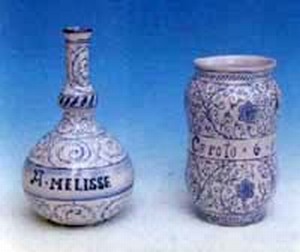 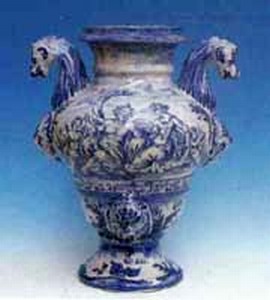 |
|
"CALLIGRAFICO"
(HANDWRITING NATURALISTIC) Introduced in the first half the XVII century in the factories of Albissola and Savona, the decorum it takes back the motives for the typical Chinese porcelains in use during the kingdom Wan-them of the Dynasty Ming. Its denomination is due to the particular technique of painting, that is to the almost handwriting sign that delineates the sketch and to the character subjects predominantly naturalistic of animals and vegetables. Particularly, in following times, to the original subjects of hares, fawns, dogs and birds among grass, flowers and palms, western motives were superimposed what castles, bell tower, churches and human figures among the cypresses. The realization is more and more often initially on white maiolica or azzurrina in blue monochrome and then in policromia, with the colors green, orange, blue and yellow during the historical production. |
|
|
DECORATE
"BOSELLI" In the second half the XVIII century the potter Giacomo Boselli produced a big ceramics number taking back a decorum floral aces in fashion to Strasburgo, to Marsiglia and Praises; from here the denomination you/he/she was born used to Albissola to point out this particular typology. The decoration of an object makes pivot on a small bundle of flowers dominated from a tulip or from a rose to which you/they make contour some other flowers of small dimensions (normally daisies); the remainder surface is only sprinkled from some small group of little flower and fogliette or from some leaflets (from here the other denomination of the style as suitable as "floral"). Gives the central character of the flowers, the realization is almost always on white maiolica in policromia and more rarely in green monochrome. |
|
|
"LEVANTINO" This decorum, performed to more colors or only in manganese (color among the brown dark color and the violet one), you/he/she is constituted by the sketch squirted of minuscule characters and little animals but also of landscape elements as farms, saplings, sea, sailboats, etc… it Results very diffused in the maioliches of the full century XVIII applied to all field, or within reserves hacked on violet background of manganese (also blue and yellow) spread out to sponged or to strong brush. The reserves typology is of clear oriental influence (the form of the spaces is of Chinese origin) while the representations derive from French incisions. The realization is always made on white maiolica. Its name derives from the family of potters, the Levantinos, active artistically in Savona and in Albissola from the second half the century and for the whole XVIII century, that you/they knew how to realize him/it with great mastery. |
|
|
BIRDS AND
PARSLEY |
|
|
BLACK AND
YELLOW CERAMICS It represents a typical production albissolese of popular ceramics and common use that characterizes the whole XIX century. It is normally divided in three typologies in base to the dominant color: that said "striped brown" present already to half the XVII century, that in black ceramics and to end that in yellow ceramics. Is normally drawn in everybody and three the cases of painted terracotta but that yellow it is also ingobbiata. Being primarily a product of common use the decoration results a great deal reduced and stylized or even absent. The yellow typology is that decorated, with a technique detail dictates to "spugnetta" because gotten with the use of a spugnetta cut out in the form and in the wanted sketch (generally taking back geometric sketches inspired to the plot of the ends) and used as a stamp. The use of the brush is reduced only for the representation of the central motives with flowers or birds.
|
|

